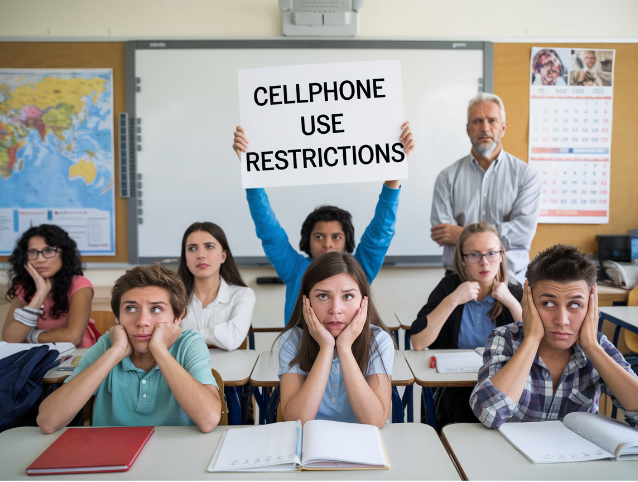Breaking News
California Joins Other States in Limiting Cellphone Use in Schools

California has joined a growing list of states restricting cellphone use in schools. Signed by Governor Gavin Newsom, the Phone-Free Schools Act gives school districts until July 2026 to create cellphone policies aimed at limiting distractions and improving mental health.
What the New Law Aims to Do
With 72% of high school teachers citing cellphone distractions as a major issue, according to a Pew Research Center study, the law comes in response to growing concerns about the impact of smartphones on student learning and mental well-being. But as with any law, there are both pros and cons.
Governor Newsom and lawmakers designed the Phone-Free Schools Act to give students a break from constant cellphone use. The legislation mandates that all schools in California must limit or ban phone use during school hours. This is part of a larger movement, with over a dozen states, including Louisiana and Indiana, enacting similar restrictions. The law aims to create environments where students can focus more on their academics and less on their screens.
Pros: Improving Focus and Reducing Anxiety
Supporters argue that the law will help reduce distractions in the classroom and provide students with a healthier school experience. Prolonged cellphone use has been linked to increased anxiety, depression, and poor academic performance. By curbing phone use, schools hope to foster better focus on academics and promote healthier social interactions.
Governor Newsom stated that this law will help students prioritize “the world in front of them, not their screens.” For many teachers, this is a welcome change. The California Teachers Association has openly supported the law, calling cellphones “a significant distraction” in schools.
Cons: Safety and Educational Concerns
Not everyone is convinced that restricting cellphone use is the right solution. Some parents argue that cellphones are crucial for ensuring their children's safety, especially during emergencies. With school shootings being a grim reality, many parents want their children to have immediate access to their phones if needed.
Moreover, some educators see smartphones as beneficial learning tools. Rather than banning phones entirely, they argue for integrating them into lessons to help students access educational apps and research resources.
Meanwhile, the California School Boards Association opposed the law, calling it unnecessary and redundant, as many schools already have phone policies in place. They also point out that the law takes away local decision-making authority, requiring districts to implement restrictions even when they might not be needed.
The National Perspective
California’s move is part of a larger trend across the U.S. In states like Louisiana and Indiana, students are required to turn off their phones during school hours. New York City, however, reversed its cellphone ban after significant opposition from teachers and school staff. Elsewhere, states such as Indiana and Minnesota have taken a middle-ground approach, allowing districts to limit but not entirely ban cellphone use, leaving the specifics up to local leadership.
As California schools begin to adapt to the new law, the debate over the proper role of smartphones in education will continue. While some view these restrictions as necessary to protect mental health and improve academic outcomes, others argue that flexibility is key. Ultimately, the success of the Phone-Free Schools Act will depend on how well schools balance these competing concerns in their implementation.
Do you agree with California’s new law limiting cellphone use during school hours? Tell us what you think.

1 Comment
Cell phones don’t belong in a classroom. Many students simply use them during class and when told by the teacher to put them away they get nasty and usually don’t comply. A cell phone is extremely disruptive for the teacher and other students. Its about time to put an end to this nonsense!